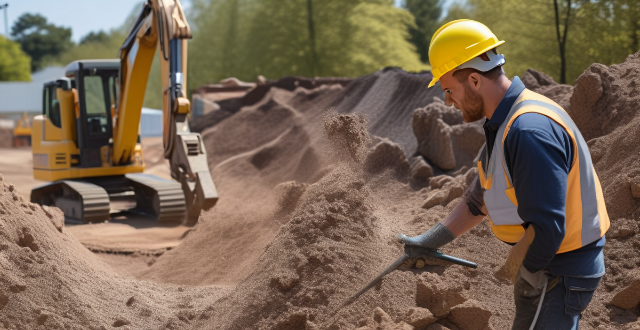The article discusses the crucial role of Personal Protective Equipment (PPE) in ensuring safety on construction sites. It emphasizes the importance of PPE in protecting workers from physical, chemical, biological, and environmental hazards. The article also highlights the legal implications of not using PPE, as well as its potential to enhance worker productivity. Furthermore, it outlines various types of PPE used on construction sites, such as head protection, eye and face protection, hearing protection, hand protection, foot protection, respiratory protection, and fall protection. The article also provides best practices for using PPE effectively, including proper fit and comfort, maintenance and replacement, training and awareness, and storage and accessibility. Finally, the article concludes that PPE is an essential component of any construction project's health and safety protocols.

The Role of Personal Protective Equipment (PPE) in Ensuring Construction Site Safety
Introduction
Personal Protective Equipment, commonly known as PPE, is an essential component in ensuring the safety of workers on a construction site. It serves as the last line of defense against workplace hazards and can significantly reduce the risk of injuries or fatalities. This article delves into the importance of PPE and its role in maintaining a safe working environment on construction sites.
Importance of PPE
Protection from Hazards
PPE is designed to protect workers from various hazards that are common in construction sites such as:
- Physical Hazards: These include impacts, cuts, abrasions, and punctures from objects like falling debris, sharp edges, and protruding nails.
- Chemical Hazards: Exposure to harmful chemicals, solvents, and other toxic substances can lead to skin irritation, burns, or even long-term health issues.
- Biological Hazards: Workers may come into contact with infectious agents or contaminants present in certain environments.
- Environmental Hazards: Extreme temperatures, noise, vibration, and radiation are examples of environmental factors that can cause harm without proper protection.
Legal Compliance
Using appropriate PPE is often mandated by law and regulatory bodies to ensure worker safety. Non-compliance can result in legal repercussions, fines, and potential loss of business licenses.
Enhanced Productivity
Workers who feel protected and secure are more likely to focus on their tasks, leading to increased productivity and reduced downtime due to accidents.
Types of PPE Used on Construction Sites
Different types of PPE are used depending on the specific risks involved in various construction activities. Some common types include:
- Head Protection: Hard hats protect against head injuries from falling objects or collisions with fixed structures.
- Eye and Face Protection: Safety glasses, goggles, face shields prevent eye injuries from flying particles, dust, and chemicals.
- Hearing Protection: Earplugs or earmuffs protect against noise-induced hearing loss caused by loud machinery and equipment.
- Hand Protection: Gloves safeguard against cuts, abrasions, heat, cold, and chemical exposure.
- Foot Protection: Safety boots protect feet from crushing injuries, punctures, and slips.
- Respiratory Protection: Masks and respirators filter out harmful airborne particles and gases.
- Fall Protection: Harnesses, nets, and guardrails prevent falls from heights.
Best Practices for Using PPE
Proper Fit and Comfort
PPE should fit properly to be effective. Loose or ill-fitting gear can compromise safety and comfort, leading to non-compliance by workers.
Maintenance and Replacement
Regular inspection, maintenance, and replacement of PPE items are crucial to ensure they remain functional and protective. Damaged or worn-out equipment must be replaced immediately.
Training and Awareness
Workers should receive training on how to use PPE correctly and understand the risks associated with not using it. Awareness campaigns help reinforce the importance of PPE in maintaining a safe work environment.
Storage and Accessibility
Proper storage ensures that PPE remains clean, undamaged, and readily available when needed. Easy accessibility encourages consistent use among workers.
Conclusion
In conclusion, personal protective equipment plays a vital role in ensuring the safety of construction site workers. By protecting them from various hazards, complying with legal requirements, and enhancing productivity, PPE is an indispensable part of any construction project's health and safety protocols. Employers must prioritize providing appropriate PPE, along with training, maintenance, and enforcement measures to create a culture of safety that extends beyond mere compliance.